An exciting and impressive place to learn about steel production in Brandenburg is the Industrial Museum in Brandenburg an der Havel. We passed the museum rather by chance and were thrilled by the visit.
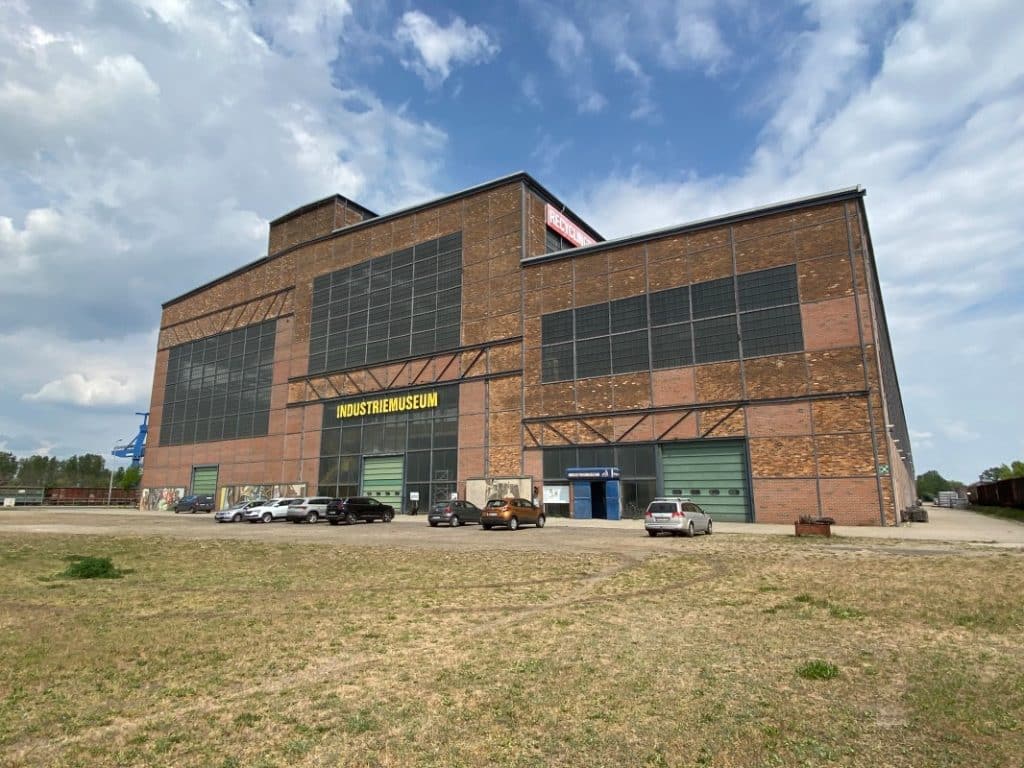
Steel production in Brandenburg
Rudolf Weber bought a huge site on the Silokanal in Brandenburg an der Havel in 1912. This location was ideal for steel production – transport links were provided by the waterways of the Silokanal and the Elbe-Havel-Oder connection, and the greater Berlin area offered sufficient scrap to serve as raw material.
The Weber rolling mill went into operation in 1914. A few years later, the operator sold it to the Deutsch-Luxemburgische Bergwerks- und Hütten-AG. This was not to be the last change of ownership in the history of the plant.
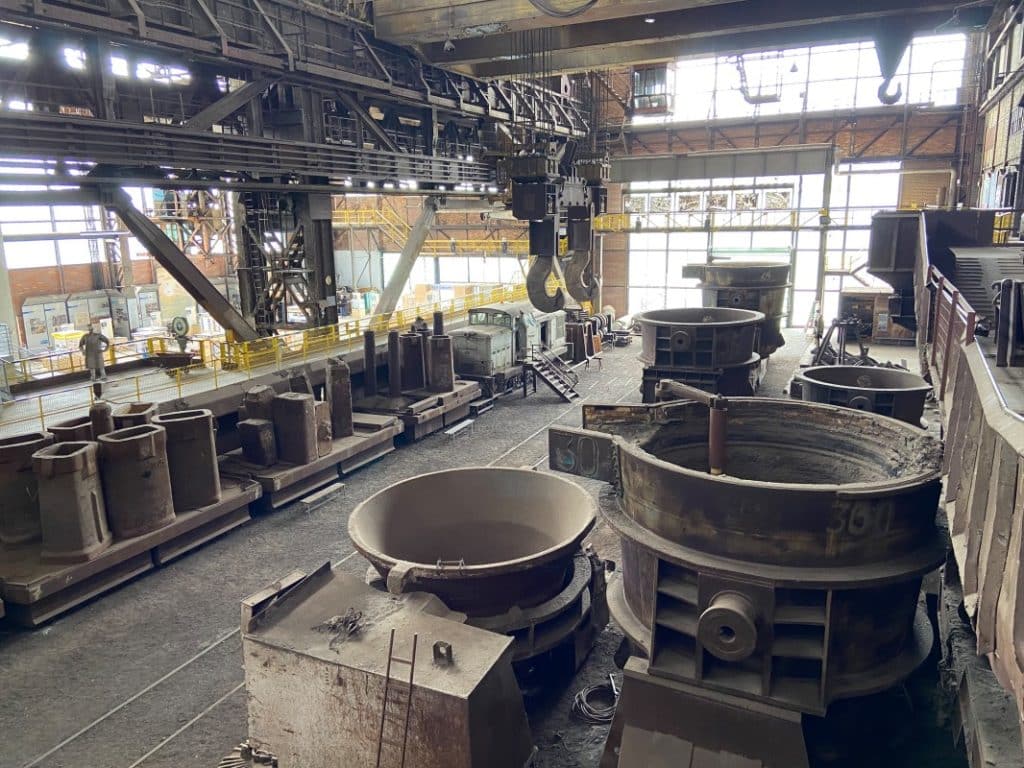
After the First World War, the factory was expanded and a new administration building was built. The expansion continued over the next few years and during the Second World War an armaments production facility was built around the rolling mill.
After the war, the factory was completely dismantled, leaving only a mountain of rubble and a pile of scrap metal.
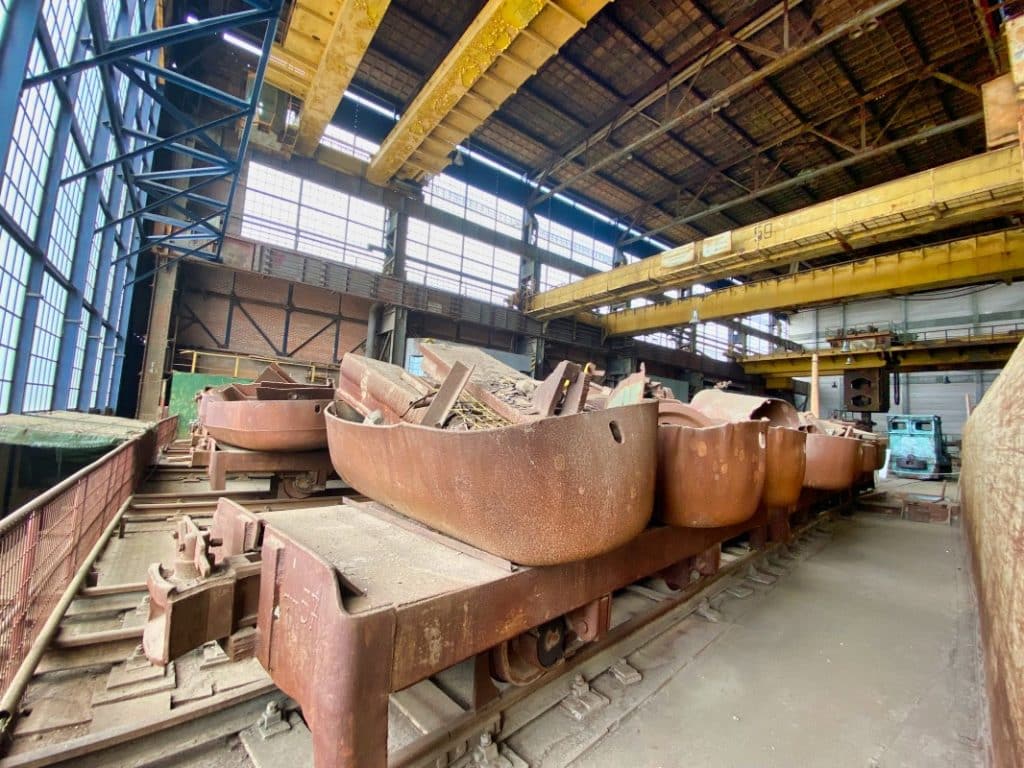
A new steelworks is being built
The era of the new steelworks in Brandenburg an der Havel begins in 1950. Under the direction of Friedrich Franz, a huge new hall with Siemens-Martin furnaces and a generator hall are built at the old site.
After the specified state planning requirements were no longer met, a restructuring within the plant began. All 12 furnaces in the steelworks and rolling mill were rebuilt to increase productivity. From 1980 onwards, the site was expanded with new production areas. The Brandenburg steel and rolling mill became the largest crude steel producer in the GDR and produced up to 2.3 million tonnes of crude steel and over 1 million tonnes of rolling mill products annually with a good 10,000 employees.
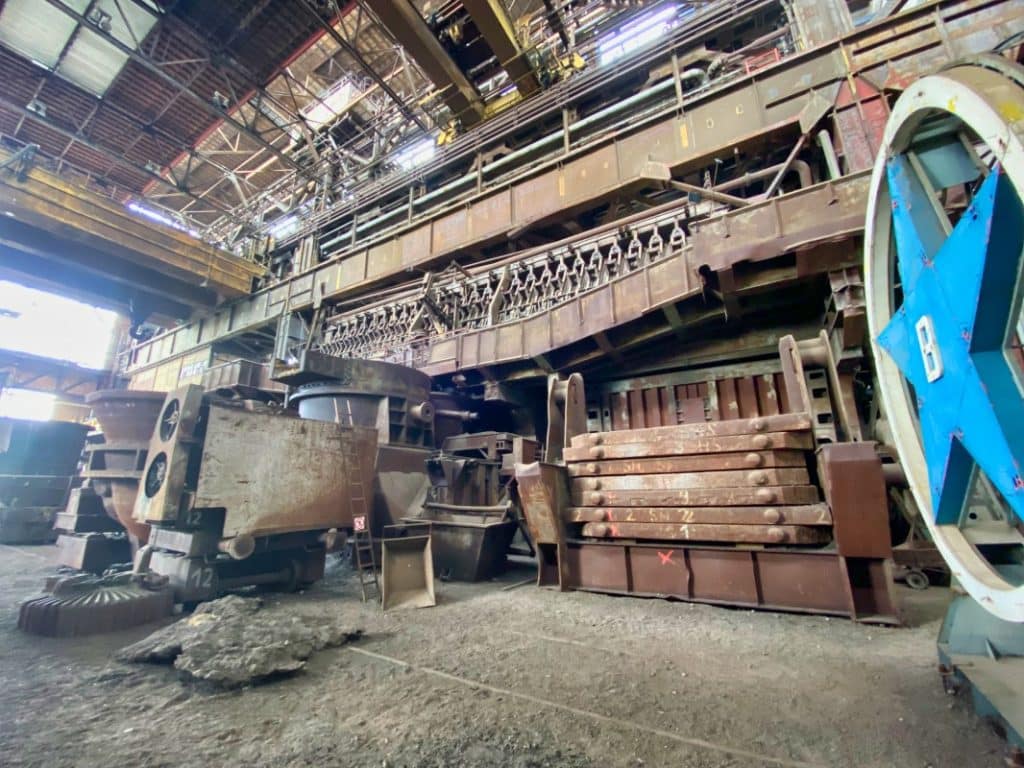
After the political changes, the Siemens-Martin furnaces were no longer competitive. In most steelworks in Western Europe, the furnaces had already been replaced years before. So the furnaces were gradually shut down and started to be dismantled. But fortunately not all the furnaces were dismantled, because today the last Siemens-Martin furnaces can be seen in the Industrial Museum.
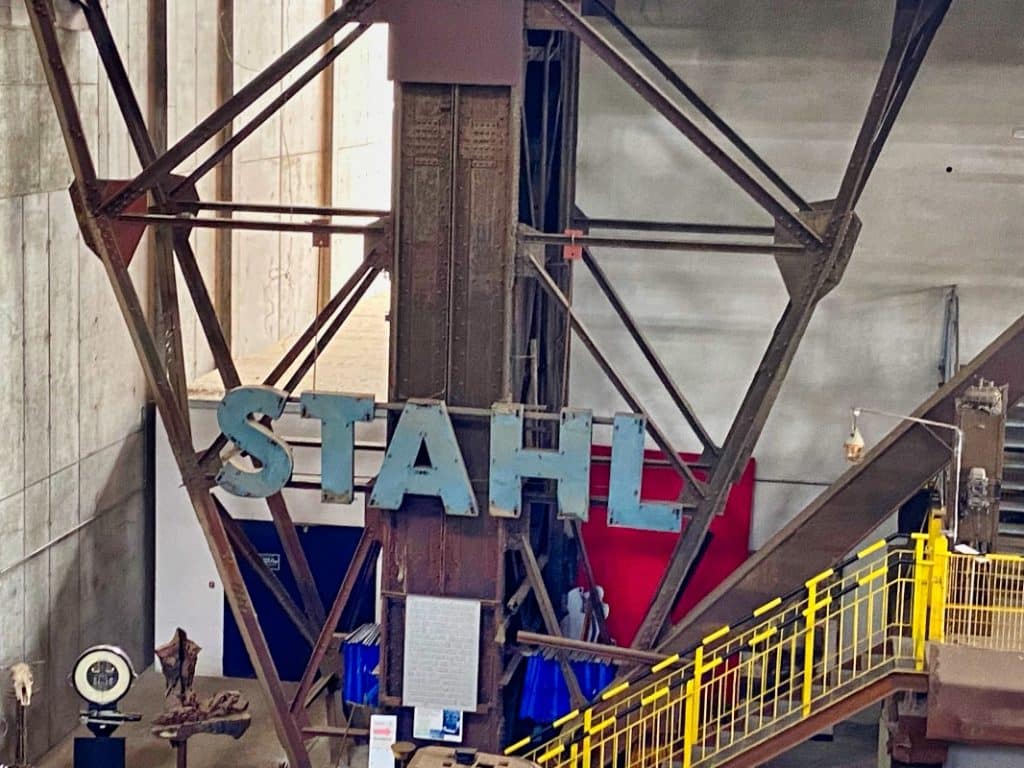
What were Siemens Martin ovens used for?
Siemens-Martin furnaces are special furnaces used for the production of steel from pig iron. The process was named after the three brothers of the famous inventor Werner von Siemens and the French ironworker Pierre Martin. The process was developed in 1864 and was the preferred method for producing steel until the first half of the 20th century.
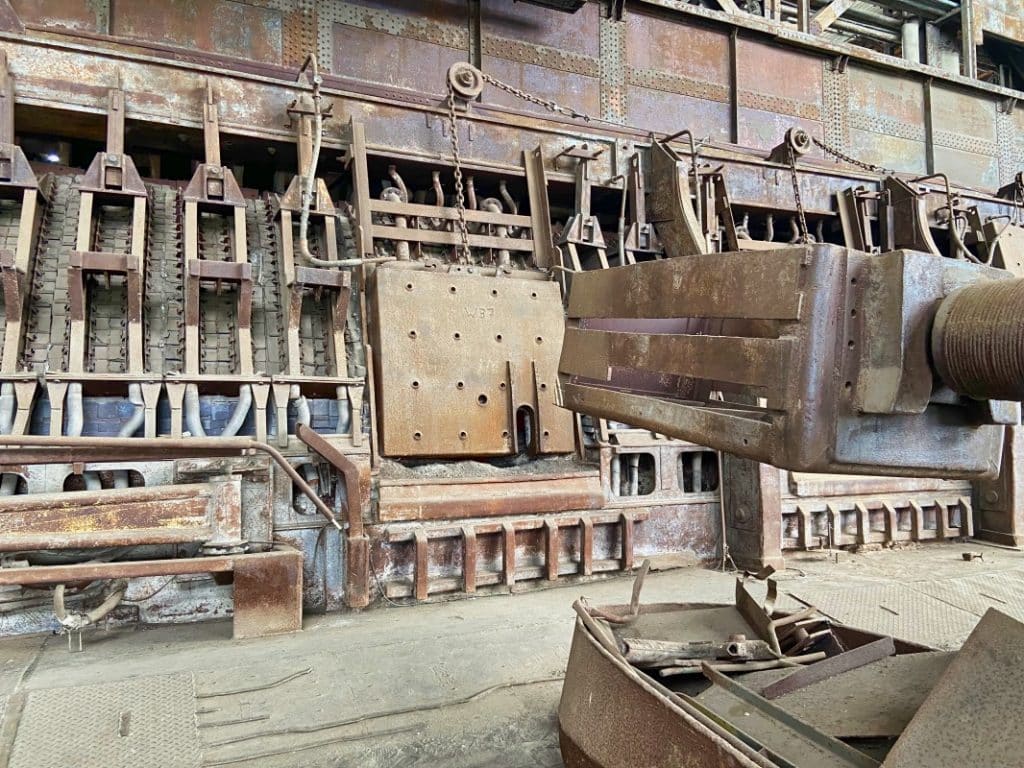
The Siemens-Martin furnace uses generator gases and oils as catalysts and fuels, respectively, to achieve higher temperatures of 1800 degrees Celsius. The furnace consists of an upper furnace, a melting chamber and a lower furnace. In the top furnace, molten pig iron or scrap is charged and heated with oil- or gas-fired burners. Air and gas preheating takes place in regenerative chambers in the bottom furnace before being fed to the melting chamber to enable combustion.
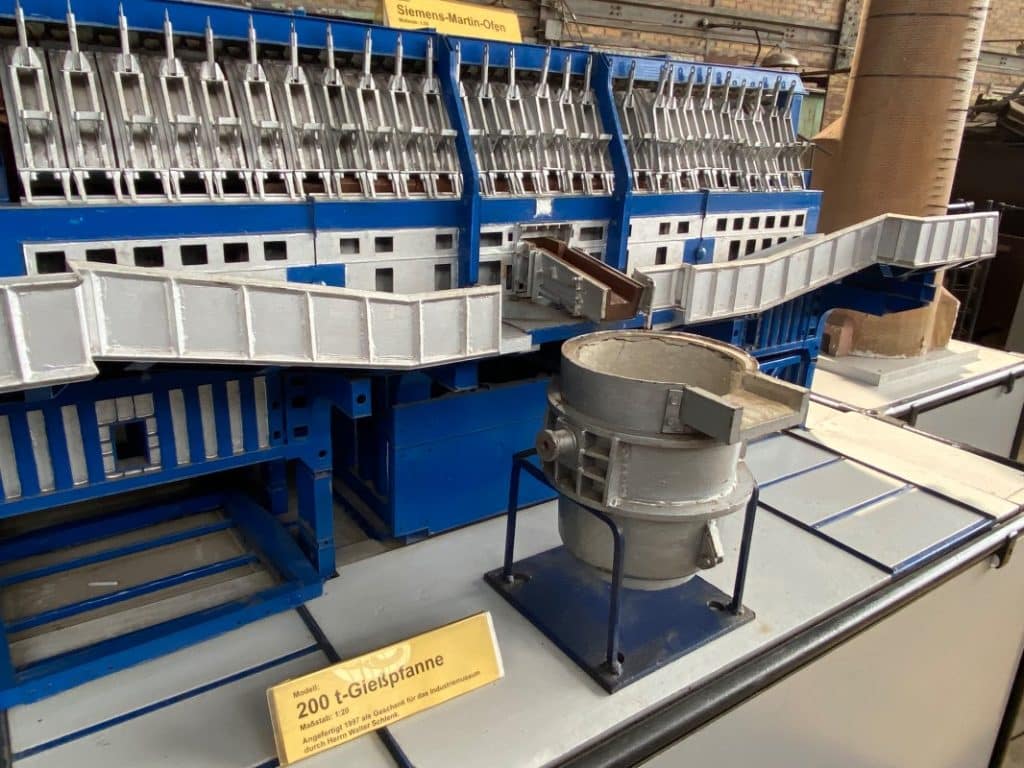
The process can be divided into three methods depending on the type of materials used: Scrap Pig Iron Process, Pig Iron Ore Process and Scrap Carbonisation Process. After melting down, the steel is decarburised and alloyed to achieve the desired carbon content and other properties. The whole process takes about eight hours and is slower than other established steelmaking processes.
The Siemens-Martin furnaces were used for the mass production of high-quality steel and received the highest awards at the 1867 World’s Fair in Paris. In the 1940s, companies were able to produce 75 % of the world’s steel products from Siemens-Martin steel.
The last German Siemens Martin kiln was shut down in 1993 for economic reasons. However, it is now preserved as a technical monument and is located in the Brandenburg an der Havel Industrial Museum.
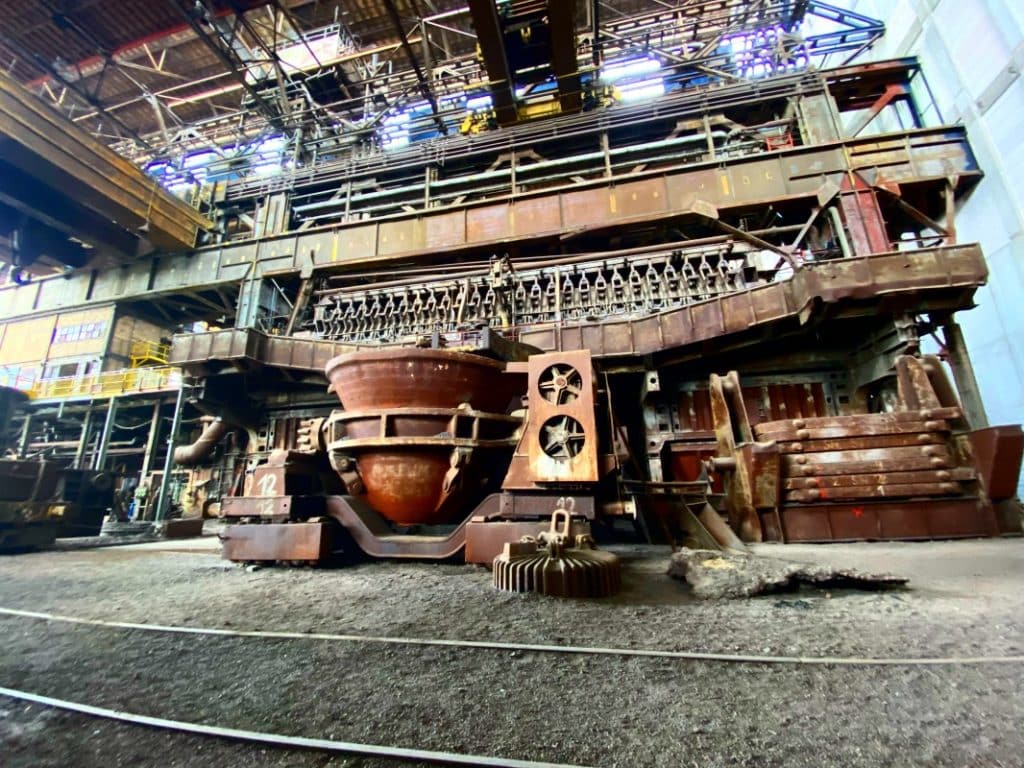
Visit to the Industrial Museum in Brandenburg an der Havel
The idea for the industrial museum was born in 1992, when it was already foreseeable that the site would be closed.
Little by little, the remains of the factory were sifted, sorted and arranged. In 1994, the last remaining Siemens-Martin kiln was listed as a historical monument. It still took a while before a concept for the preservation of the monument was finally found. The Förderverein Stahlmuseum Brandenburg an der Havel e.V. leased the gutted and renovated furnace hall and set up the industrial museum.
We drove past the huge hall rather by chance and if I hadn’t read something about museum, we would have missed this amazing museum.
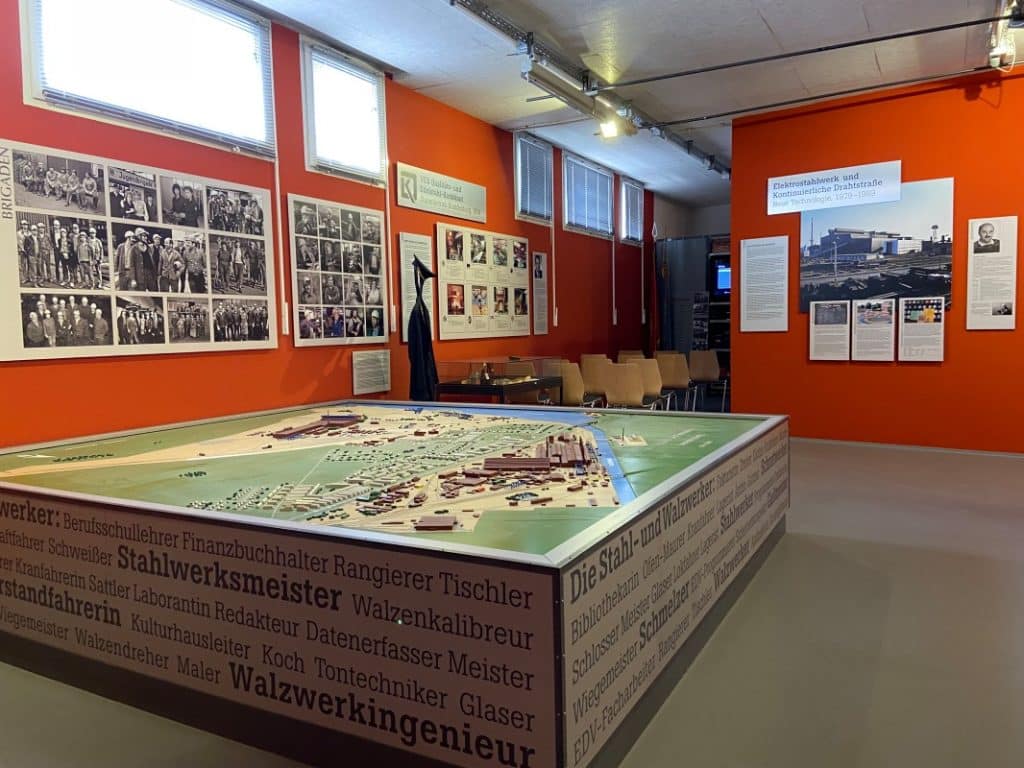
Via a steel staircase we reached the ticket office area of the museum. This is also where the first part of the exhibition is located, which deals with the history of the place. Even though the exhibition area was very informative and pictures introduced us to the topic of steel processing, we were relatively quickly drawn into the huge factory hall.
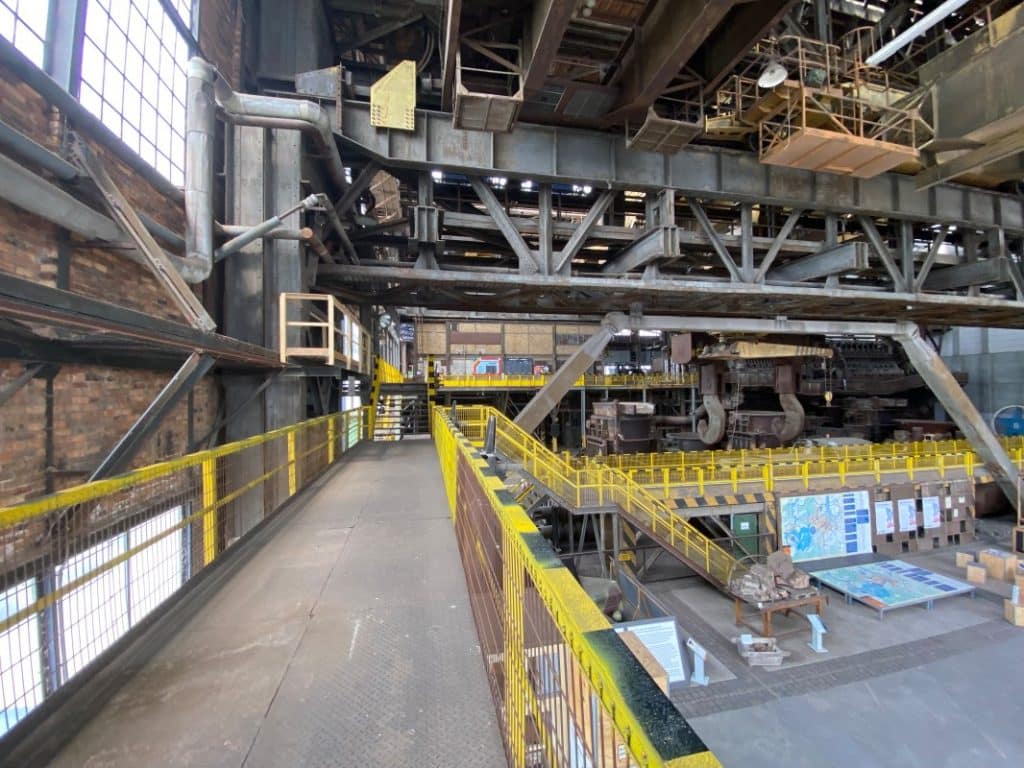
I was so surprised that I didn’t know where to look first. Not only the dimension of the hall, but also the machines, ovens and, for me at first, indefinable objects attracted my gaze. It looked as if work was only pausing for a short while and that the workers would be coming back from their break at any time. I took a quick breath and then went on a journey of discovery through the industrial museum in Brandenburg an der Havel.
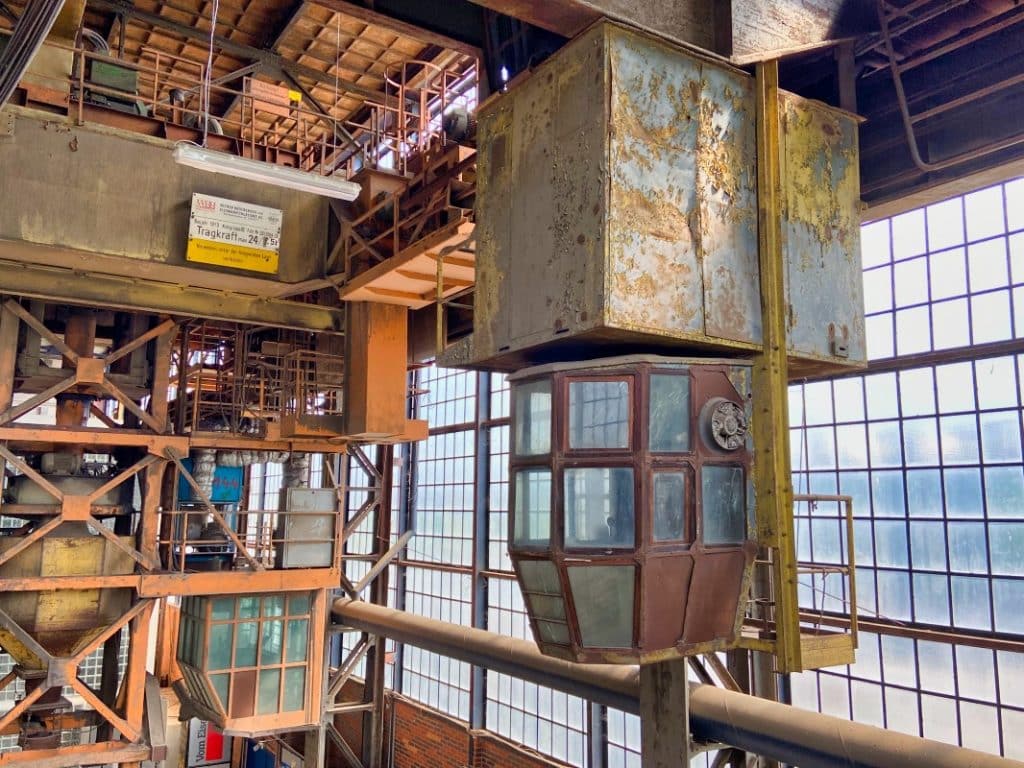
We were able to get an overview of the hall via a pathway. Even from up there, the exhibits seemed enormous. Huge hooks were hanging from the ceiling and the observation and work panels under the roof were certainly only a suitable workplace for workers who were free from giddiness.
I was also impressed by the Siemens-Martin furnace and the cranes and locomotives that were needed to deliver and unload the material. In the huge melting furnace, 180 tonnes of steel were produced in one melting process, which is roughly equivalent to the weight of 120 VW Golfs.
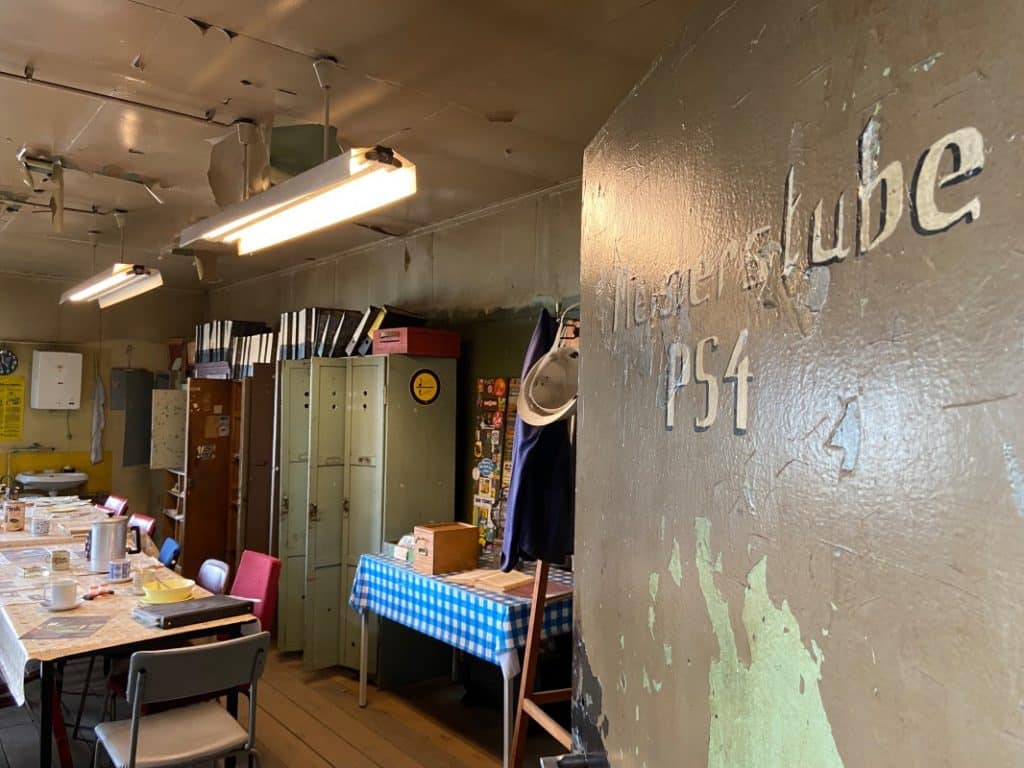
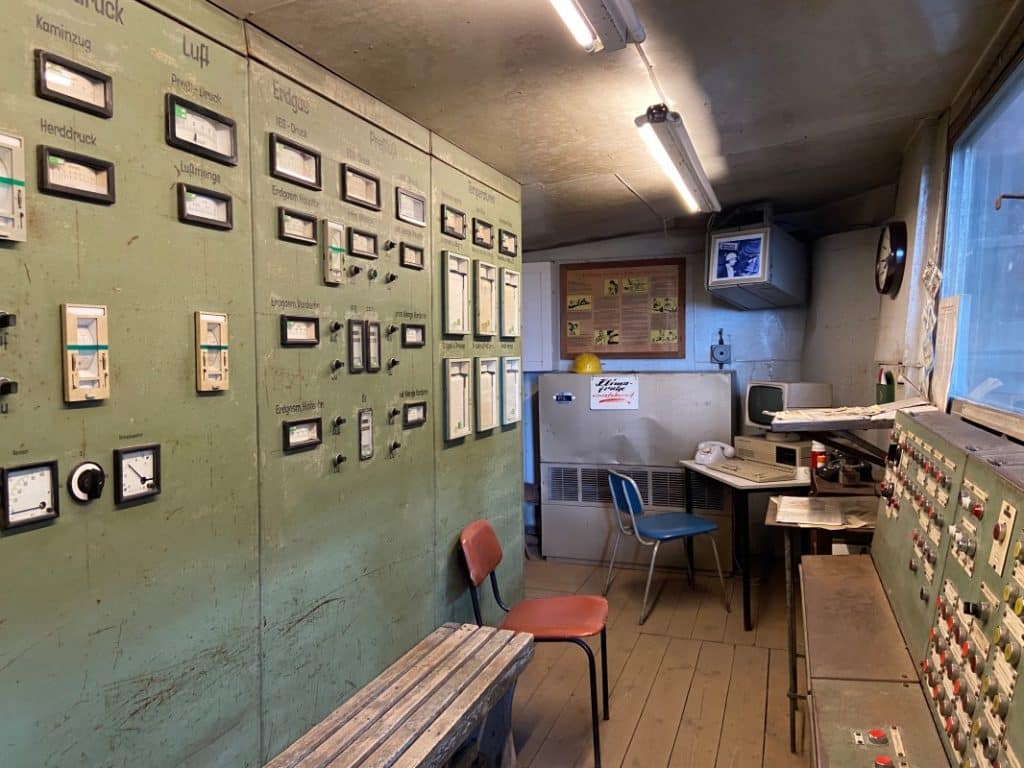
In addition to the workshop, you can also look into the recreation rooms, surveillance rooms and workshops. A forge and a laboratory, for example, have been preserved true to the original.
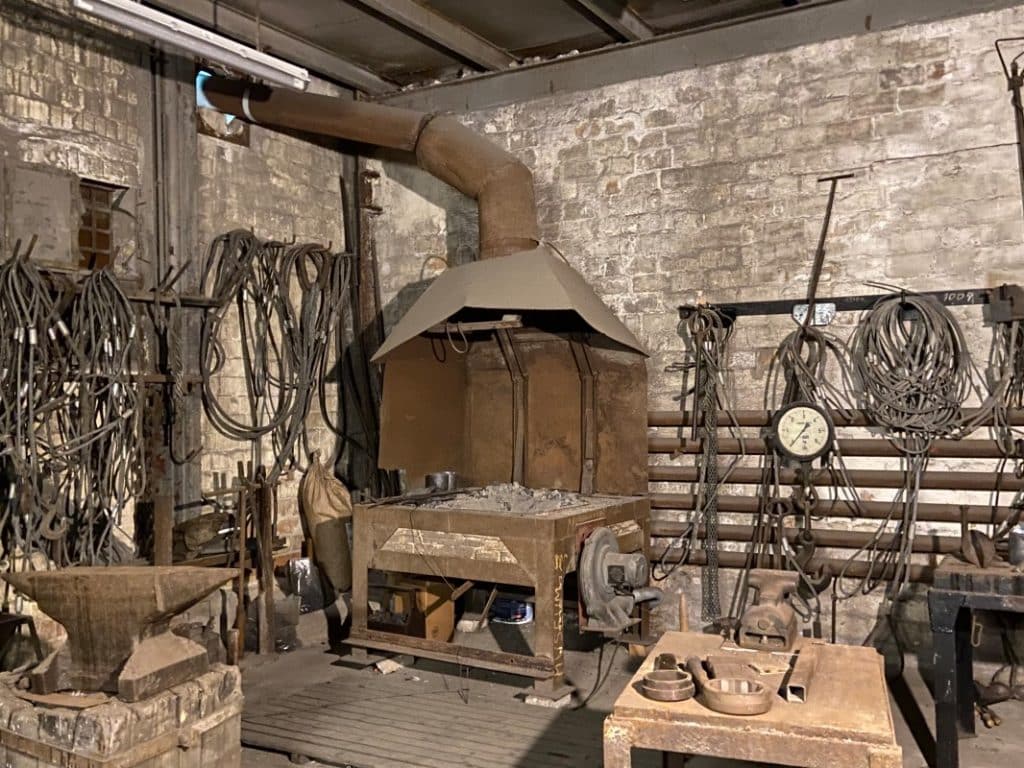
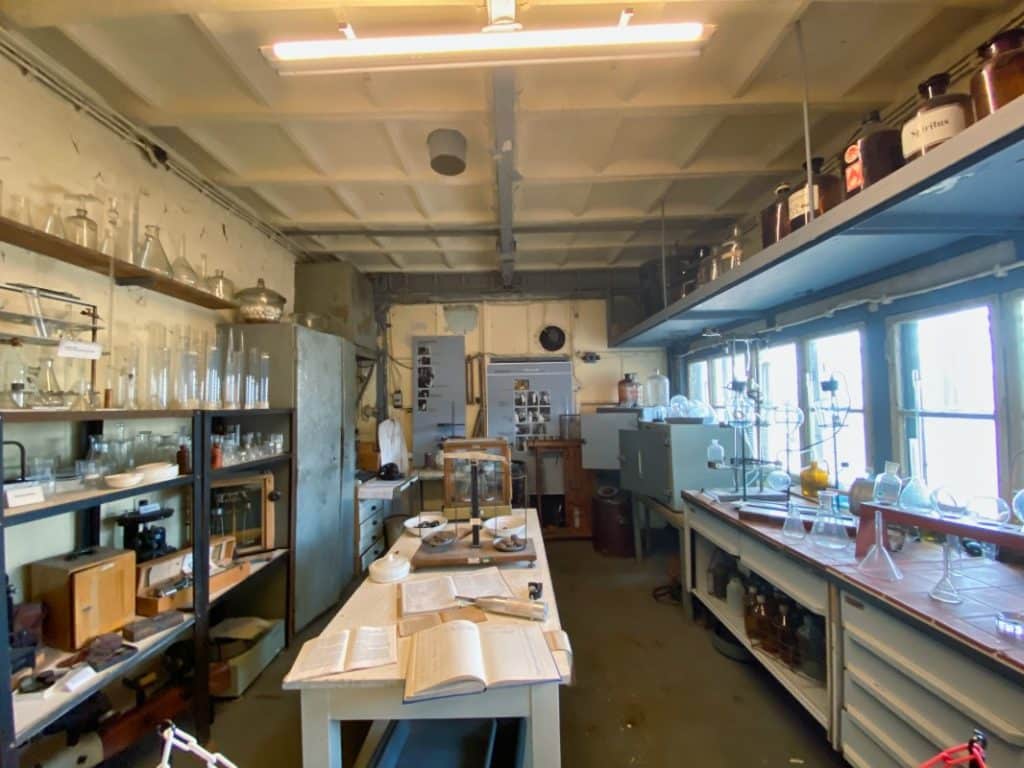
The industrial museum in Brandenburg an der Havel is a great destination not only for technology fans, photographers will also discover numerous motifs here. We really enjoyed the visit and I’m glad we stopped spontaneously.
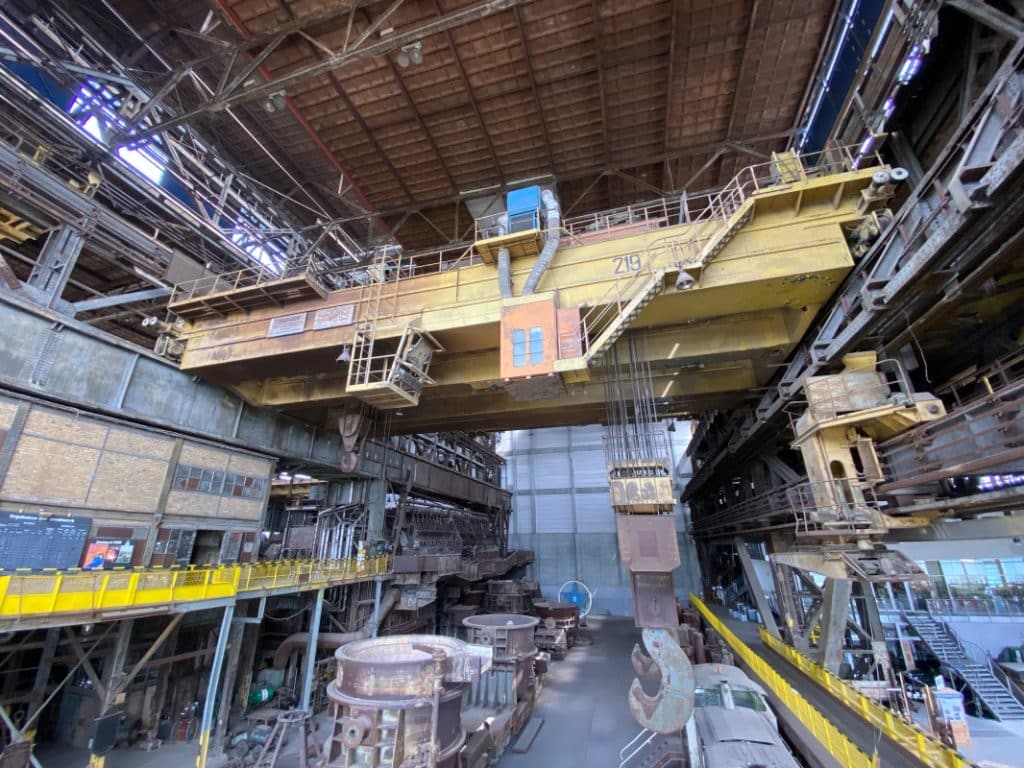
Address:
August-Sonntag-Straße 5
14770 Brandenburg an der Havel
Opening hours:
November-February:
Tuesday-Sunday, public holidays: 10am-4pm
March-October:
Tuesday-Sunday, public holidays: 10am-5pm
Admission prices:
Adults: 6,-€
Discounts are offered.
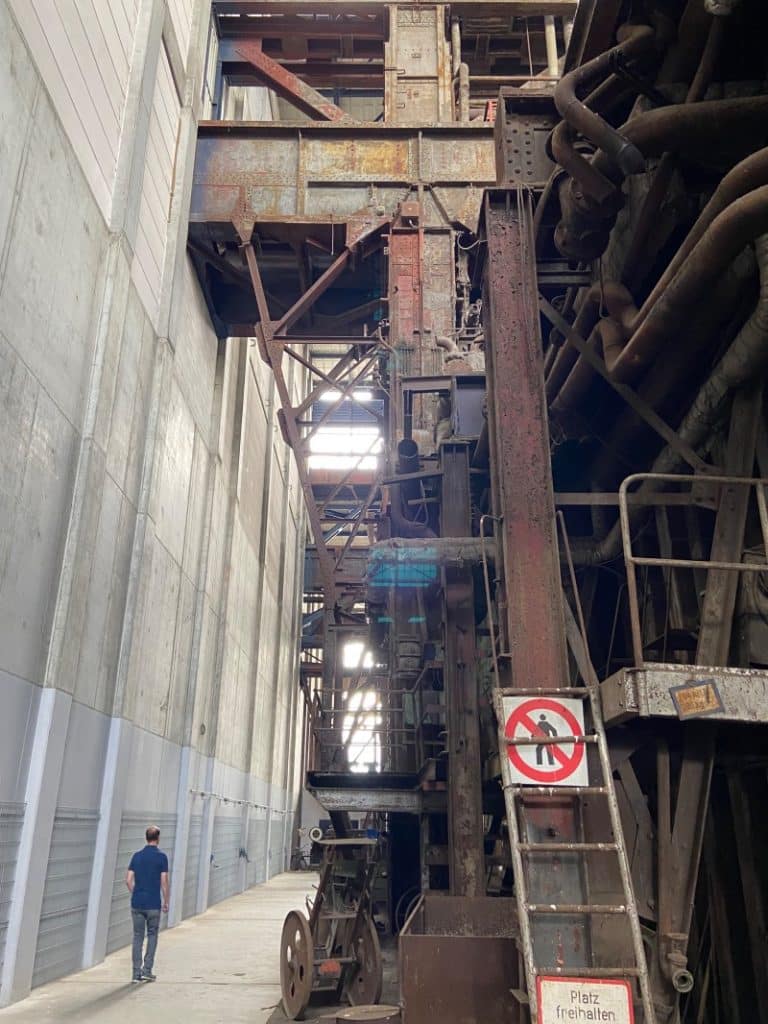
We have been granted permission to use the photos by the Brandenburg an der Havel Industrial Museum, thank you very much!
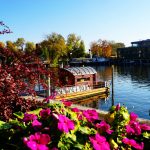
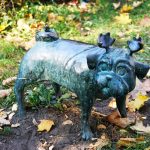
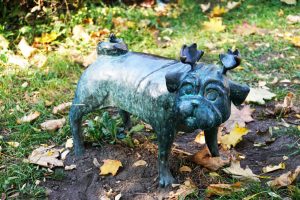
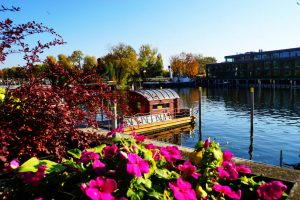
Leave a Reply